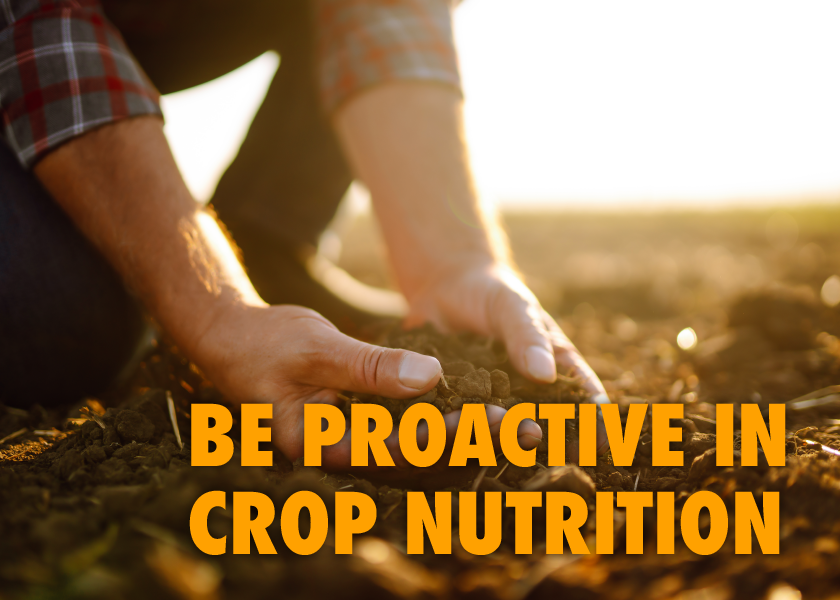Get ahead of potential nutrient deficiencies this year

As the temperature gets slightly warmer and the daylight a little longer, even if you don’t have seeds in the ground, it’s never too soon to curb crop deficiency.
Once you spot signs of nutrient deficiencies in your crops, it can be difficult to come back. Be proactive with a plan to boost crop nutrition this spring, avoiding deficiencies from showing up in your fields this summer.
Get ahead of potential deficiencies now and throughout the season with periodic nutrition check ins and adjustments.
1. Check your soil pH levels
Before planting, get a gauge of your soil’s pH. This number, which measures the acidity and alkalinity in soils, should generally fall between 5.5 and 7.0 for most plants. Factors that can impact a soil’s pH include:
- Rainfall amounts
- Crop types
- Fertilizer materials
- Subsoil acidity
- Liming
There are several ways to determine soil pH, such as a soil test or digital reader.
For help with determining and addressing pH levels, reach out to your local extension office or contact a Mosaic agronomic expert.
2. Replace what was lost, and then some
Did you know: About 80% of phosphorus and 30-40% of potassium taken up by corn and soybeans are removed in the grain? Following high yields in 2023, be sure to give your soil the nutrients it needs to sustain growth.
“Our job is to try to maintain the level of fertility of that field so it can retain its long-term productivity,” explains Mosaic’s Director of New Product Development Ross Bender. “A record yield’s rapid nutrient removal equates to rapid nutritional decline in the soil if we're not careful and replacing those nutrients.”
Understand what nutrients your crops might have displaced in your fields. Calculate your removal rate with Mosaic’s calculator.
3. Actively monitor nutrition as the season progresses
Gauge nutrient levels throughout the season with plant analysis. Data are used in various tests designed to:
- Diagnose existing nutrient problems
- Predict nutrient problems likely to affect crop production between sampling and harvest
- Monitor crop nutrient status for optimal crop production
Through methods such as a visual assessment, soil test or tissue test, you can learn how the plant is performing nutritionally, and adjust accordingly. Correct existing issues now if time allows, or predict and prevent future problems.
Get ahead of nutritional needs with a high-performing fertilizer application
Don’t let time get away and nutrient deficiency sneak up on you. Once the visual signs are present, yield potential is already decreased. While a rescue application may correct some of the problem, there is no way to rebound completely.
Proper fertilizer management is necessary for higher yields. Mosaic MicroEssentials® provides the phosphorus, nitrogen, sulfur and zinc that crops need to thrive. All packed into one small-yet-mighty granule, your crops benefit from uniform nutrient distribution, greater nutrient uptake and season-long sulfur availability.
Trust a proven performer now, and rest assured you are giving your crops the nutrients they need to set them up for success.







